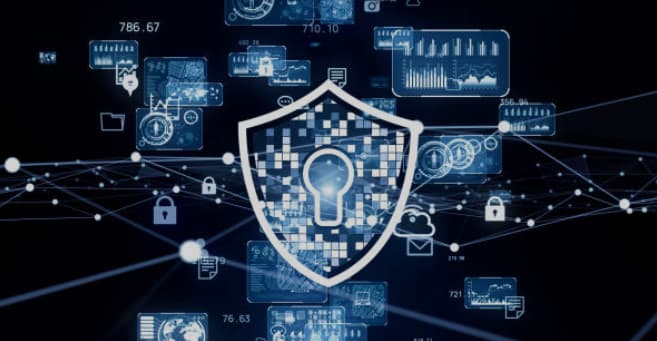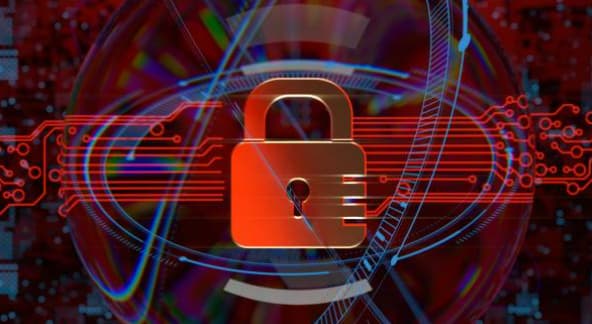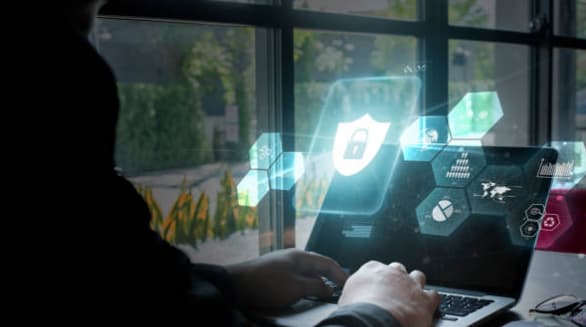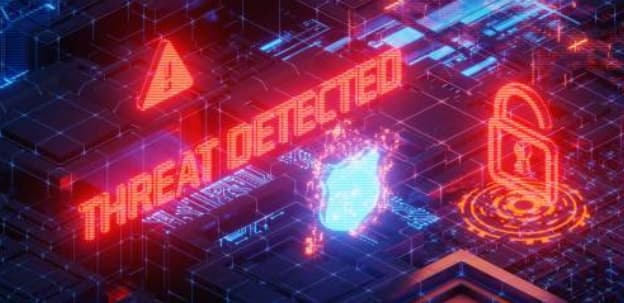Since 2019, phishing attacks have surged by over 150% annually, underscoring the escalating threat of email-based attacks. Email sandboxing, a crucial strategy against evolving cyber threats, is employed to identify and block these malicious attempts.
This blog post is expertly prepared by MX Layer specialists, ensuring a comprehensive and authoritative understanding of the critical contribution Email Sandboxing makes to enhancing organizational security. In this exploration, we delve into the pivotal role of Email Sandboxing, elucidating its precise definition and purpose in the face of the growing menace of phishing attacks.
What is the definition and purpose of email sandboxing?

Email sandboxing, a cybersecurity technique, utilizes an isolated testing environment to scrutinize incoming files or code, preventing potential harm to the host system or network. This innovative approach enables security teams to safely analyze suspicious files within a secure environment mirroring production endpoints, effectively deceiving cyber attackers. The protective enclave of the sandbox ensures that any threats identified during testing won’t impact the host network.
In the context of email security, MX Layer sandboxing emerges as a robust next-gen solution fortified with award-winning machine learning and behavioral analysis technologies, particularly adept at countering zero-day threats. This comprehensive approach enhances defenses against malware, spear-phishing, and advanced persistent threats (APTs).
When an email containing potentially malicious content arrives, the sandbox sequesters it within its confines, quarantining it from the rest of the user’s network. Importantly, this isolation ensures that even if the email harbors harmful code, it can execute within the sandbox without causing any adverse effects on the broader network. The overarching objective is clear: to identify and neutralize potential risks before they can cause harm.
In the absence of a protective sandbox environment, an email carrying harmful code could infiltrate the user’s network, exposing it to a myriad of risks. Therefore, understanding the implications of forgoing email sandboxing is paramount before we proceed with a more detailed explanation.
Why is email sandboxing the crucial shield against cybersecurity threats?

Dallas faced a severe cybersecurity incident in March-April 2021, revealing the immediate threats from employee negligence. The Dallas Police Department suffered significant data losses due to an unintentional action by an employee, emphasizing the importance of robust cybersecurity measures, particularly in email sandboxing. The incident resulted from an employee unknowingly leaking sensitive information, showcasing the need for effective email sandboxing to prevent or mitigate data breaches. A proactive email sandboxing solution could have intercepted the threat, allowing scrutiny and neutralization before compromising the city’s data security.
A seemingly innocuous click can have overstated consequences. A single click on a seemingly harmless email attachment or link can initiate the download of malware onto a system, setting off a chain of events with far-reaching implications. The malware, once unleashed, can stealthily navigate through a network, stealing sensitive information, damaging files, or, in the worst-case scenario, gaining control over the entire system.
Given the potential threats posed by cybersecurity incidents like the Dallas Police Department data leak, the need for robust cybersecurity solutions has never been more evident. In this context, email sandboxing emerges as a critical component of a comprehensive cybersecurity strategy.
How do the functional dynamics of email sandboxing safeguard against cybersecurity threats?
Email sandboxing involves a series of functional dynamics aimed at detecting, isolating, analyzing, and ultimately preventing potential threats:
- Detection:
The process commences with the detection of suspicious files or emails. Various methods, such as signature-based detection, heuristic analysis, or behavioral analysis, are employed to identify potential threats lurking in digital communication channels.
- Isolation:
Once the security personnel pinpoint a suspicious file or email, they isolate it within a secure and controlled environment—the sandbox. The sandbox replicates the end-user’s operating system and applications, ensuring that security experts can safely examine the file without the risk of posing any threat to the host system.
- Analysis:
Within the confines of the sandbox, the suspicious file or email is executed or ‘detonated.’ This controlled execution allows cybersecurity experts to observe its behavior and discern any malicious activities, such as alterations to system settings or the creation of new processes.
- Reporting:
Following the analysis, experts generate a comprehensive report outlining the behavior of the file or email. This report serves a dual purpose: updating threat intelligence databases and enhancing future detection capabilities.
- Prevention:
If the analysis confirms the malicious nature of the file or email, security personnel take decisive actions to prevent any potential harm. These actions may involve deleting the file or email, blocking its sender, or quarantining it for further investigation, thereby mitigating the impact on the larger network.
Email sandboxing is at the core of MX Layer functionality, creating a secure environment to detect, isolate, analyze, and prevent potential threats effectively. Empowering your email security with MX Layer Email Sandboxing is the key to staying ahead of the constantly evolving zero-day attack threats.
How MX Layer Utilizes Sandboxes for Enhanced Security
MX Layer, at the forefront of email security, harnesses the power of sandboxes to fortify its defenses against evolving cyber threats. Cybersecurity experts leverage sandboxes as invaluable tools for testing suspicious files. These isolated environments mimic end-user operating systems, allowing the safe execution, or ‘detonation,’ of suspicious code. This extra layer of defense enables experts to scrutinize payloads that may have evaded other detection techniques, offering a crucial advantage in identifying and neutralizing potential threats.
Dynamic File Analysis in MX Layer
MX Layer employs dynamic file analysis within its sandboxing environment, taking email security to the next level. When email messages arrive with attachments or URLs leading to attachments, MX Layer’s advanced techniques come into play. Traditional scanners may yield neutral results, prompting the need for extended scans. In a controlled environment named the MX Layer sandbox, the file undergoes a process akin to detonation.
MX Layer’s sandbox environment utilizes deception technology to run files in a virtual machine that simulates a normal end-user device. It observes and records every phase of the execution process, contributing to the creation of a comprehensive intelligence report.
MX Layer‘s Dynamic File Analysis covers various aspects such as detecting antivirus (AV) and operating system (OS) memory space, matching patterns using Yara rules, identifying ransomware behavior patterns, analyzing files through machine learning based on attributes, exploring sandbox evasion techniques, examining crypto mining activities, and inspecting network connections.
How does email sandbox contribute to the preventive role in isolating malware?
Sandboxes are crucial in isolating malware, especially when dealing with Advanced Persistent Threats (APTs). APTs, crafted to elude traditional detection methods, present a considerable challenge to cybersecurity. Executing suspicious code in a sandbox effectively curtails the spread and impact of malware, providing an essential proactive layer of defense against these sophisticated attacks.
Essentials of Cybersecurity Measures

As we delve into the essential cybersecurity measures, our focus extends to a proactive approach aimed at fortifying the digital fortress. A proactive stance in cybersecurity involves preventing risks and preparing organizations to navigate the ever-evolving challenges of the digital landscape. Those who adopt proactive security measures reduce the likelihood of breaches and minimize overall cybersecurity risks and expenses in the long run. Here, we will explore the fundamental cybersecurity practices that collectively constitute a robust defense strategy, laying the groundwork for a resilient and secure digital future.
- Multi-Factor Authentication (MFA)
MFA enhances security by requiring users to provide multiple forms of identification (password, mobile device, fingerprint). This extra layer deters unauthorized access even if one factor is compromised.
- Employee Training and Awareness
Regular training fosters a cybersecurity culture, educating employees on its importance, recognizing threats like phishing, and promoting best practices for information security.
- Regular Security Audits and Vulnerability Assessments
Periodic audits and assessments proactively identify network weaknesses, allowing organizations to address vulnerabilities promptly and strengthen overall cybersecurity.
- Endpoint Security
Focused on devices like laptops and mobiles, endpoint security deploys measures such as antivirus software and access controls to protect against cyber attacks.
- Network Security
Building a robust defense against unauthorized access, network security utilizes firewalls, intrusion detection, and secure Wi-Fi protocols to safeguard critical data.
- Incident Response Plan
A structured plan outlines steps for swift and effective response to security breaches, minimizing the impact and ensuring an organized effort to address threats.
- Regular Software Updates and Patch Management
Timely software updates and patch management mitigate known vulnerabilities, reducing the risk of exploitation by cybercriminals.
- Data Encryption
Encryption converts sensitive information into a secure format, safeguarding it from unauthorized access during transfer or storage.
- Collaboration with Cybersecurity Experts
Partnering with experts provides insights into emerging threats and best practices, enhancing the effectiveness of cybersecurity measures.
- Proactive Cybersecurity Strategies
Staying ahead of threats through regular reviews and updates to security tools, protocols, and practices ensures readiness for a secure digital future.
Proactive Measures to Stay Ahead of Cybercriminals

Cybercriminals are becoming increasingly sophisticated, continuously devising new strategies to infiltrate networks and compromise sensitive information. The first line of defense in the war against cyber threats is a proactive cybersecurity strategy. Waiting until an attack occurs is not an option. Organizations must take preemptive measures to secure their digital perimeters, and one powerful tool in this arsenal is email sandboxing. This proactive approach involves subjecting incoming emails to a controlled, isolated environment—sandbox—where potential threats can be identified and neutralized before reaching the intended recipient.
The risks associated with malware infections extend far beyond mere inconvenience. The potential costs—both financial and reputational—can be staggering. Malicious software can lead to data breaches, unauthorized access to critical systems, and even the compromise of intellectual property.
Moreover, the evolving nature of cyber threats means that traditional antivirus solutions are no longer sufficient. Cybercriminals are adept at circumventing outdated defenses, leaving organizations vulnerable to a myriad of advanced attacks. MX Layer Email sandboxing or Dynamic File Analysis acts as a proactive barrier, identifying and isolating suspicious content and preventing malware from ever reaching the inbox.
Email as a Common Entry Point

Email, serving as a cornerstone for both personal and professional communication, has woven itself into the fabric of our daily lives. More than half of the world’s population uses email every day, and it is estimated that by 2025, 4.6 billion individuals will be utilizing this communication tool. The sheer volume is staggering, with a daily exchange of 319.6 billion emails.
Moreover, a remarkable 99% of users check their email at least once per day. However, this omnipresence comes with a dark reality: email has evolved into a common entry point for cyber threats. Disturbingly, it stands out as the primary avenue for malware attacks, posing a grave cybersecurity concern. According to a 2019 Verizon report, a staggering 94% of security incidents involving malware originate from malicious emails. In simpler terms, 9 out of every 10 malware attacks find their genesis in our inboxes. Presently, over 92% of all malware is delivered through email.
The impact of email-borne threats is not a hypothetical scenario; it’s a present-day reality that organizations cannot afford to ignore. In the past 12 months, email-borne threats have ranked as a top concern, with nine out of ten organizations reporting at least one successful breach through email. A staggering 76% of respondents predicted that an email-borne attack would have severe consequences for their organization in the coming year. Recognizing the escalating cyber risks, 70% of surveyed companies anticipate business disruption due to an email-borne threat in 2021.
These statistics paint a clear picture of the challenges posed by email as a vulnerable entry point in our interconnected digital landscape. As email continues to be an integral part of our daily routines, addressing these cybersecurity concerns becomes paramount to safeguarding both personal and professional spheres from the ever-looming threats that lurk in our inboxes.
Significance and Benefits of Email Sandboxing

Within the Email Sandboxing framework, MX Layer’s Dynamic File Analysis represents a substantial advancement in email security, providing a heightened level of protection against a myriad of cybersecurity threats.
MX Layer‘s Dynamic File Analysis
MX Layer actively utilizes a sandbox environment named “Dynamic File Analysis” to analyze incoming email attachments or URLs leading to attachments.
Thorough Process of Dynamic File Analysis
Incoming attachments undergo a process within the sandbox, resembling a detonation process. The analysis thoroughly examines the actions the files try to perform.
Enhanced Protection Against Threats
MX Layer’s Email Sandboxing adds an extra layer of protection, going beyond traditional threat detection methods to enhance overall email security.
Proactive Defense Approach
MX Layer’s approach emphasizes the actions files attempt rather than relying on traditional signature-based detection. This proactive defense strategy ensures a more robust defense against emerging threats.
Integration with Cybersecurity Layers
MX Layer’s Dynamic File Analysis seamlessly integrates with other cybersecurity layers. This integration extends to network-managed detection and response (MDR) and endpoint MDR.
Comprehensive Defense System
The integration with various cybersecurity layers creates a comprehensive defense system. This holistic approach significantly reduces the likelihood of network breaches or infections.
Controlled Environment and Deception Technology
MX Layer’s sandbox provides a controlled environment using deception technology. It simulates a typical end-user device, meticulously recording and analyzing every phase of the execution process.
Aspects Covered by Dynamic File Analysis
MX Layer’s dynamic file analysis encompasses a wide range of aspects, including antivirus and operating system memory space detection, pattern matching using Yara rules, identification of ransomware behavior patterns, machine learning-based attribute analysis, scrutiny of sandbox evasion techniques, examination of crypto mining activities, and inspection of network connections.
Engaging with Cybersecurity Experts

Collaborating with cybersecurity experts is essential for organizations seeking to strengthen their IT security strategies. Encouraging organizations to delve into the intricacies of Email Sandboxing and complementary IT security strategies is the first step toward bolstering their defenses. The technique’s efficacy lies in its ability to observe and analyze behaviors in a controlled environment, ensuring threats are thwarted before reaching vulnerable systems.
In this pursuit, leveraging advanced solutions such as MX Layer can significantly enhance your email security. MX Layer employs state-of-the-art technology to provide an additional layer of protection, seamlessly integrating with email systems to identify and neutralize threats before they infiltrate your network.
When it comes to enhancing cybersecurity posture, seeking guidance from cybersecurity experts is invaluable. These professionals offer actionable recommendations based on industry best practices and cutting-edge technologies. Notable organizations like MX Layer provide comprehensive cyber risk assessments, delving into every facet of an information security program. For real-time assistance, we offer 24/7 support with our experts, allowing organizations to discuss unique cybersecurity needs and receive solutions backed by real-world threat intelligence and research.
Remember, engaging with cybersecurity experts is not just about identifying vulnerabilities; it’s an investment in the digital safety and resilience of the organization.
Future Trends And MX Layer

- AI and Machine Learning Integration
The integration of artificial intelligence (AI) and machine learning (ML) is anticipated to play a pivotal role in enhancing email security. MX Layer, with its award-winning machine learning and behavioral analysis technologies, is positioned to evolve in tandem with these advancements.
- Zero-Day Threat Prevention
As cyber threats become increasingly sophisticated, the ability to combat zero-day threats becomes paramount. MX Layer’s robust sandboxing solution, fortified with advanced technologies, is specifically designed to counteract zero-day threats effectively.
- Enhanced Dynamic File Analysis
MX Layer is an adaptable solution that keeps up with cybercriminals’ ever-changing tactics. We achieve this through continuous process refinement, which involves identifying ransomware behavior patterns and scrutinizing sandbox evasion techniques.
- User-Friendly MX Layer Free Trial
Explore the effectiveness of MX Layer with our user-friendly free trial. We understand the significance of informed decisions in cybersecurity, and our Free Trial lets organizations experience the features and benefits of MX Layer’s email sandboxing. It’s a risk-free opportunity to assess its effectiveness in your unique environment.
Advanced Filtering Technology
MX Layer boasts several key capabilities that make it a robust email security solution:
- Top-notch Protection
MX Layer defends against advanced email threats, including spear-phishing attacks, utilizing advanced algorithms and machine learning.
- Customization Options
Employees can customize their email preferences, including spam filters and notification settings.
- Real-time Insights
Gain rich real-time insights into email traffic, track mail flow and trends, monitor email usage, and understand your organization’s email behavior.
MX Layer’s advanced filtering system effectively halts digital threats, including spam, viruses, phishing attempts, and malware attacks. It ensures a secure and clean inbox by swiftly detecting and responding to the latest spam and malware outbreaks.
MX Layer scans outgoing emails for viruses, malware, and spam, protecting against security threats and reducing spam. It ensures that potentially harmful or unwanted emails are blocked from the recipient’s inbox.
Closing Thoughts
As phishing attacks surge annually, exceeding 150%, the need for a robust defense against email-based threats becomes paramount. This blog post, curated by MX Layer specialists, has unveiled the key role of email sandboxing and its indispensable contribution to a comprehensive cybersecurity strategy.
Email sandboxing is a strategic imperative, providing a proactive defense approach against the escalating challenges posed by cybercriminals. By utilizing isolated testing environments, such as MX Layer’s Dynamic File Analysis, organizations can detect, isolate, analyze, and prevent potential threats with unparalleled efficacy. This approach is particularly crucial in countering the growing menace of malware, spear-phishing, and advanced persistent threats (APTs).
As organizations navigate the challenges of the digital landscape, adopting a proactive cybersecurity strategy is essential. The Dallas Police Department incident in 2021 starkly illustrates the immediate threats from employee negligence, emphasizing the need for robust cybersecurity measures. MX Layer’s dedication to staying abreast of emerging trends, including the integration of AI and machine learning, along with zero-day threat prevention, establishes it as a frontrunner in the field.






